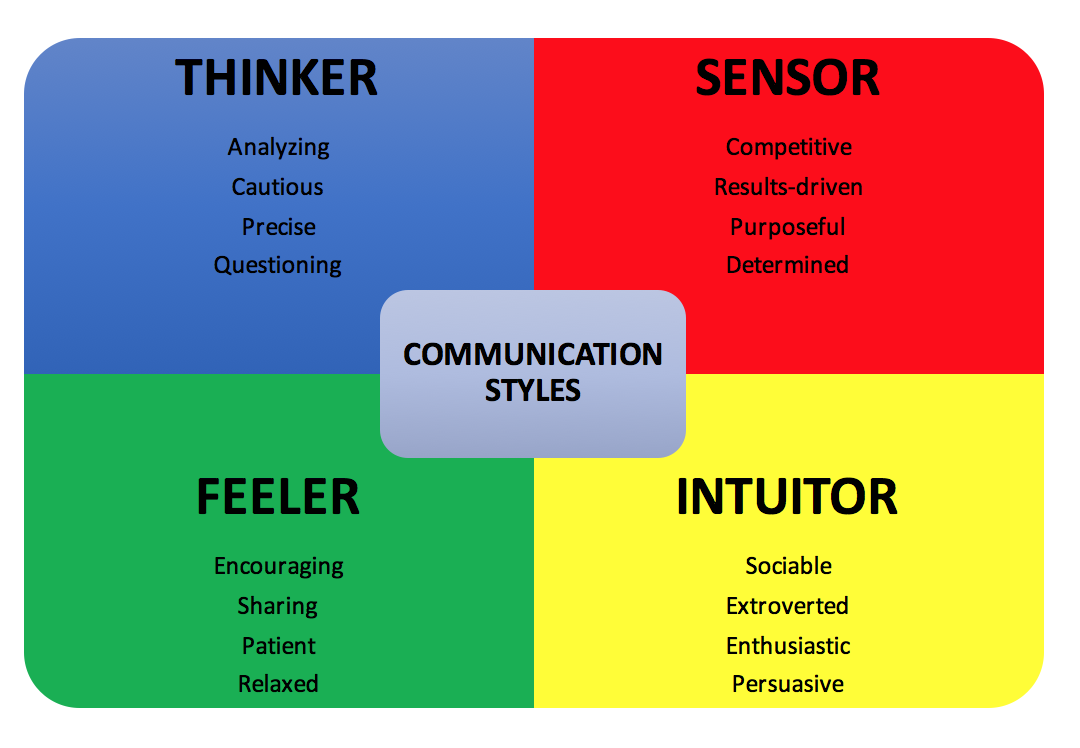2. WIIFT - What’s in it for them?
You aren’t sending an email to yourself, so don’t write about how your idea will serve your own interests. Craft a message that caters to your audience’s needs and frame the objective of the email with that in mind. Think: how will THEY benefit when your idea is implemented?
After you say hello, state the primary objective and reason WHY they should care about receiving this information:
“I am writing to you to share the results of the client survey we implemented last month. You will find these results interesting because it confirms that the changes you made on your team are having a positive impact on customers!”
3. Get to the point.
Knowing your audience and how they like to receive information will be critical in knowing how you draft the body of your email. In general, people process and think about information in two ways:
Big picture - Often times these types are focused on leading others, inspiring, and creating strategy to drive long-term goals. When a change is introduced they are likely to ask "WHY are we changing?". They may also ask: why will this idea work, or how will this affect our long-term strategy? When crafting an email to these folks include the WHY at the beginning. Keep things simple and direct and use stories or past examples of success to illustrate how your idea will succeed. Being able to connect your idea to overall goals of your team and/or company will be key in winning them over.
Detail-oriented -These folks are often the scientists, engineers, and data folks. They are most interested in HOW your idea will be implemented. When confronted with change, and if they cannot see the steps leading to the end goal, they are likely to say, “This won’t work". Make sure you include plenty of data, statistics, evidence and facts supporting your idea. Use bullets to explain steps to achieving your idea. Provide additional details in spreadsheets/graphs/charts.
4. What questions or doubts can you answer?
If you anticipate some resistance from your message, prepare to answer their main questions before they have time to ask. Be prepared with your counter-arguments and ensure you have answered the WHY, HOW, WHAT, WHEN and WHO questions. You can strategically craft your counter-agruments by knowing which of these is their priority:
Bottom-line - your counter argument should include facts and data focused on cost-benefit analysis, profits, resource usage efficiency, and time savings.
Customer/employee oriented - your counter argument could be a story that reveals past successes and achievements to help them visualize positive benefits for the future. You may mention that you have already received buy-in and support from other team members and clients.
4. Make it easy on them to say "yes!"
We are all busy and overwhelmed by emails all day. Wouldn’t it be nice if someone solved some of the problems for us? When you are persuading someone of an idea, or providing them updates to a project, ensure there is a proactive tone to your email and that they won't have to do much work to make the change happen.
Ask yourself:
Can you propose one or two possible solutions and let them decide which they prefer?
Can you make a recommendation on the direction the project could take and ask for their input? Use impactful and future oriented language that conveys results: “I recommend that we…”
Do you have the authority to make the decision on your own? If yes, do so.
Always include yours and others' next steps. Include dates and times of follow-up and metrics that will identify when success has been achieved.
5. Cut It out.
This is the important part. Most of us like to ramble and barf our thoughts into an email. This is inconsiderate--expecting that others will read your mind or decipher what's going on in your brain.
Ask yourself:
What does my audience NEED to know? (Make sure this at the top and stated in 1-2 sentences or bullets).
What does MY audience (not me) care about that I can provide them? (Make sure this is in the body of the paragraph. Bullets are best, with the most important items at the top of the list).
What are the nice-to-knows? Cut this stuff out or include as an attachment. Try to delete at least ¼-½ of what you wrote.










